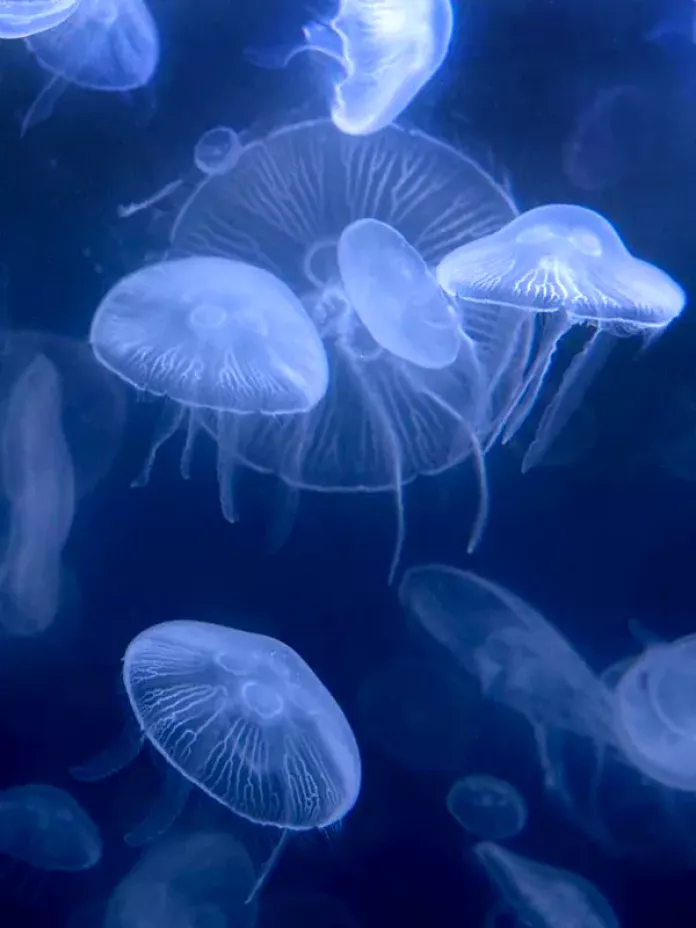
The History of the Appearance of Jellyfish in the Azov Sea
The history of the appearance of jellyfish in the Azov Sea is extremely confusing. According to some sources, there have always been jellyfish in the Azov Sea, but according to some primary sources, which are currently difficult to find, until about the 70s of the twentieth century, there were practically no jellyfish in the Azov Sea - too fresh water of the Azov the sea was absolutely not suitable for jellyfish. In addition, the Sea of Azov was fed by huge volumes of water that fell into it from many rivers, the most full-flowing of which were the Kuban and Don. This replenished the Azov Sea with fresh water and caused its excess, so water was sent from the Azov Sea to the Black Sea through the Kerch Strait at a fairly high speed. The speed of the sea current was such that it allowed the migration of shoals of fish, but did not allow jellyfish to penetrate from the Black Sea into Azov.
What has changed? As always - the coincidence of natural factors and the ill-conceived actions of man. Dry and hot weather for several years has led to a decrease in water both in the rivers feeding the Azov Sea, and to increased evaporation from the Azov Sea itself. Man also had a hand in this - various projects to block rivers with dams and redirect water flows have led to a significant decrease in water coming from rivers to the Azov Sea. All these factors led to the fact that the level of the Azov Sea began to decrease, and the reverse process began to occur in the Kerch Strait - if earlier water came exclusively from the Azov Sea to the Black Sea, now huge volumes of salt water from the Black Sea went to the Azov Sea, entraining with a lot of its inhabitants, including jellyfish.
The decrease in the volume of fresh water coming from the rivers, as well as the flow of salt water from the Black Sea, led not only to the penetration of jellyfish into the Azov Sea, but also to a significant increase in the salt content in its waters, bringing them closer to conditions comfortable for living and breeding jellyfish in the Azov Sea. Since then jellyfish have become an integral part of fauna of the Azov Sea, and it seems that it will not be possible to simply return them back to the Black Sea.
Massive Invasion of Jellyfish in the Azov Sea
Over the past half century, there have been at least two massive invasions of jellyfish in the Azov Sea - in the 70s of the last century and began towards the end of the 20s of the twenty-first century. These massive increases in the jellyfish population are caused by the same factors - high temperatures, increased evaporation of water from the Azov Sea and limited fresh water from the rivers flowing into it. As a result, the jellyfish population began to grow significantly, and this led to significant discomfort for vacationers on the Azov Sea - few people like to swim in a sea filled with a jelly-like substance, which, moreover, can also sting.
How to Relax on the Azov Sea with Jellyfish?
There is no effective way to deal with jellyfish in the Azov Sea, as, indeed, in many other seas and oceans, so vacationers need to either choose a season for rest on Azov Sea - in May or June, when the water is still cold enough for jellyfish, but already suitable for swimming, or relax in expensive hotels with artificial swimming pools or fencing from jellyfish in the sea. But, unfortunately, artificial reservoirs are not a substitute for a good rest on the coast of the Azov Sea, therefore, when choosing options for recreation, everyone must make a choice for themselves.